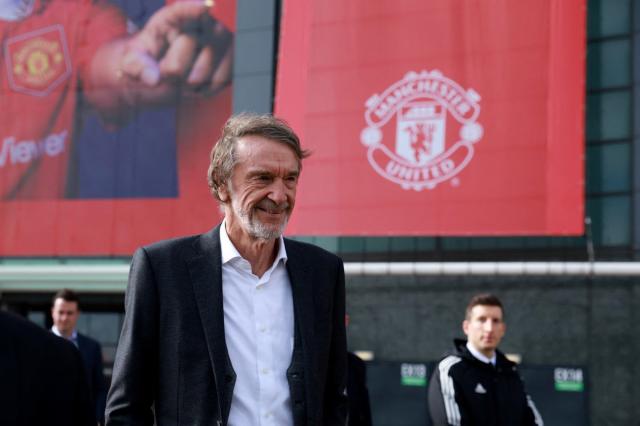Manchester United have made a significant decision to retain a scaled-down version of Old Trafford as they move forward with ambitious plans to construct a new state-of-the-art stadium. Initially, it was widely believed that Old Trafford would be demolished to make room for a new £2 billion, 100,000-capacity stadium. However, the latest plans reveal that Old Trafford will be preserved with a reduced capacity of around 30,000 to 35,000. This development marks a crucial step in safeguarding the club’s heritage while simultaneously preparing for a modern future.
Sir Jim Ratcliffe, a prominent figure in the sports and business world, is spearheading the development of the new stadium, envisioned to be the “Wembley of the North.” This new stadium aims to provide Manchester United with a cutting-edge facility that can accommodate a larger fanbase and offer an enhanced matchday experience. The decision to retain Old Trafford in a scaled-down form reflects a thoughtful approach to balancing modernization with preserving the rich history and traditions associated with the club’s iconic home since 1910.
The revamped Old Trafford will serve as the home ground for Manchester United’s women’s team and various academy squads. This move is a strategic one, ensuring that the historic stadium remains an integral part of the club’s infrastructure. By repurposing Old Trafford, the club can maintain a connection to its storied past while providing a dedicated venue for the development and showcasing of new talent.
One of the key aspects of this plan is the preservation of notable features within Old Trafford. The statues of Sir Matt Busby, Sir Alex Ferguson, and United’s holy trinity of George Best, Denis Law, and Sir Bobby Charlton will remain prominent fixtures. These statues are not just monuments; they are symbols of the club’s illustrious history and the legendary figures who have shaped it. Additionally, the Munich clock, which commemorates the tragic 1958 Munich air disaster, and the historic central tunnel on the halfway line will be preserved. The central tunnel is the only existing part of the original 1910 stadium and holds immense sentimental value.
The decision to scale down Old Trafford rather than demolish it entirely aligns with Manchester United’s broader vision of honoring their heritage while embracing the future. The reduced-capacity stadium, with a planned seating of 30,000 to 35,000, will still be a significant venue, capable of hosting important matches and events. This approach ensures that fans and players alike continue to experience the magic of Old Trafford, albeit in a more intimate setting.
Sir Jim Ratcliffe’s involvement in the project brings a level of expertise and commitment that bodes well for its success. His vision for a new “Wembley of the North” is ambitious and reflects the club’s aspirations to remain at the forefront of football innovation. The new stadium is expected to feature state-of-the-art facilities, enhanced fan amenities, and advanced technological integrations, making it one of the premier football venues in the world.
The financial implications of this dual-stadium approach are significant. The construction of a new £2 billion stadium represents a substantial investment, but the retention of Old Trafford also carries costs for its renovation and upkeep. However, Manchester United’s management believes that this investment is crucial for the club’s long-term success and sustainability. The ability to generate revenue from both stadiums, coupled with the enhanced fan experience, is expected to offset these costs over time.
Manchester United’s decision to preserve Old Trafford while building a new stadium is a testament to the club’s commitment to its fans and its history. The scaled-down Old Trafford will continue to be a place where memories are made, and legends are honored. At the same time, the new stadium will symbolize the club’s forward-looking approach and ambition to remain competitive at the highest levels of football.
In conclusion, Manchester United’s plans to retain Old Trafford amid the development of a new stadium under Sir Jim Ratcliffe mark a pivotal moment in the club’s history. This dual approach ensures that the heritage of Old Trafford is preserved while providing the club with a state-of-the-art facility to meet future demands. The preservation of iconic features and the strategic use of both stadiums underscore Manchester United’s dedication to honoring their past while embracing the future. As the project progresses, fans can look forward to an exciting new chapter in the club’s storied legacy, with both Old Trafford and the new stadium playing central roles.
ALSO READ:Golden State Warriors Face Pivotal Offseason After Klay Thompson’s Departure


